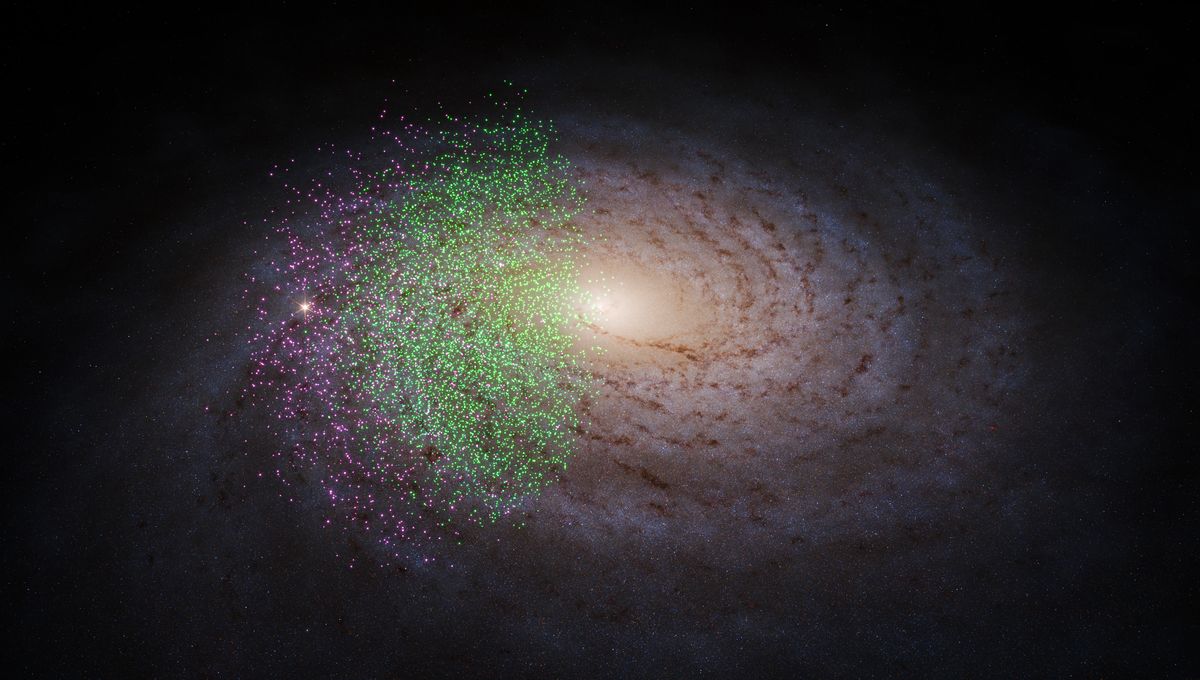
Galaxies grow by snagging material from intergalactic space as well as just gobbling up other galaxies. We see that happening in the universe and we know that it must have happened in the past with our own galaxy, the Milky Way. Thanks to the Gaia observatory, astronomers have now found two of the oldest mergers that took place in our galaxy.
Gaia is a European Space Agency mission that is responsible for the most precise map of the Milky Way ever created. Such a map tells us where billions of stars are today, but it can also be used for galactic archaeology – finding out where some of its stars came from.
A galaxy merger is a slow and messy affair. It usually brings a lot more gas, which ends up forming new stars. Older stars from the original galaxies mingle together and if you were just photographing them you would not be able to pick them apart. But Gaia data, combined with the spectra of stars from the Sloan Digital Sky Survey (DR17), allowed us to reveal much more.
Gaia’s enormous map also provides information about the motion of stars. If a group of stars are all moving in the same way, it’s a hint they might be related, but the proof comes from their chemical compositions.
Stars are mostly hydrogen and helium, but they do have a sprinkling of other elements. This is known as metallicity, and it can work like a fingerprint and as a date stamp. The older the star, the lower the metallicity. Stars created the elements beyond helium, so older stars had fewer metals to play with when they formed. Also, stars that formed in the same region will have a similar composition.
Putting metallicity and motion together allows researchers to find out if these groups belong together.
They have done this multiple times, with streams of stars such as the Pontus stream and the “poor old heart” of the Milky Way back in 2022, as well as the most recent large merger, caused by the collision with the Gaia Enceladus/Sausage galaxy between 8 and 10 billion years ago. The two new components are called “Shakti” and “Shiva”, and they are much older. They merged with the proto-Milky Way between 12 and 13 billion years ago.
“What’s truly amazing is that we can detect these ancient structures at all,” Khyati Malhan of the Max Planck Institute for Astronomy (MPIA), who led the research, said in a statement emailed to IFLScience. “The Milky Way has changed so significantly since these stars were born that we wouldn’t expect to recognise them so clearly as a group – but the unprecedented data we’re getting from Gaia made it possible.”
“When we visualised the orbits of all these stars, two new structures stood out from the rest among stars of a certain chemical composition,” added Khyati. “We named them Shakti and Shiva.”
The exciting difference between Shakti and Shiva compared to the Old Heart of the Milky Way is that these components are spread out far from the core of our galaxy. Shakti orbits farther out than Shiva and in a more circular way. If we were to turn back time 12 billion years, we would not see a galaxy with spiral arms in a thin disk. We would be seeing the messy streams of stars from multiple collisions.
“Shakti and Shiva might be the first two additions to the ‘poor old heart’ of our Milky Way, initiating its growth towards a large galaxy,” co-author Hans-Walter Rix, also of MPIA and the lead “galactic archaeologist” from the 2022 work, said in another statement.
Future Gaia releases might reveal more streams and more ancient components of the Milky Way. They could provide important missing steps in the formation and evolution of our own galaxy.
The study is published in The Astrophysical Journal.
Source Link: Two Of The Oldest Building Blocks Of The Milky Way Have Just Been Found